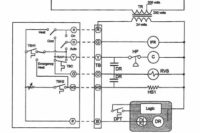The equipment in this month’s troubleshooting situation has been around a while. Installed in 1999, the unit is a Nordyne brand, Model #S3BA-60K, and the customer requesting service explained to the dispatcher that they have had to replace fuses in the disconnect several times.
The ambient environment is classified as an excessive heat warning situation, and when you arrive, you find one fuse blown in the disconnect switch assembly. The customer also provides you with a further explanation of the problem, saying that in the early part of the summer, they would have to replace a fuse on an intermittent basis, but with the advent of higher temperatures later in the season, the situation occurred with increased frequency.
You also note that the disconnect switch is new, having been replaced by an electrician when the customer noted corrosion and heat damage inside the assembly. After the disconnect switch was replaced, it didn’t solve the problem and fuses, only lasted a short time.
As your first step in evaluating this situation, you check the equipment specifications and determine that the fuses are of the proper amperage and type. After replacing a fuse and re-starting the unit (partial diagram shown in Figure 1), you are able to determine the following:
- Compressor current draw: 25 amps,
- Condenser fan motor current draw: .5 amps,
- Capacitor check C to Herm: 60 MFD, and
- Capacitor check C to F: 5 MFD
Your two-part troubleshooting question: Based on the information above, which component in the system is suspect, and what is the possible sequence of events that is causing fuses to blow?
Compare your answer with ours here.
Publication date: 8/7/2017
Want more HVAC industry news and information? Join The NEWS on Facebook, Twitter, and LinkedIn today!











